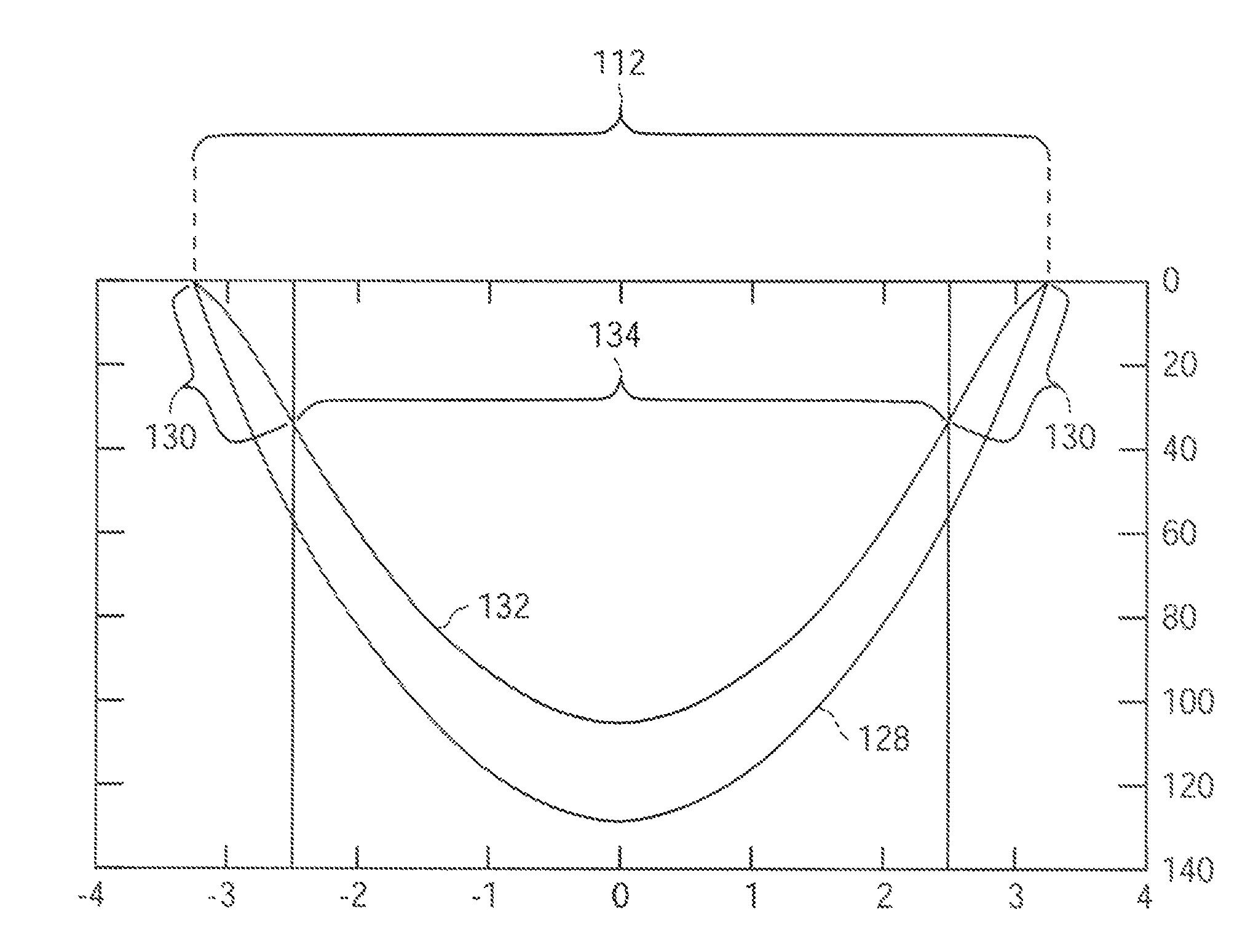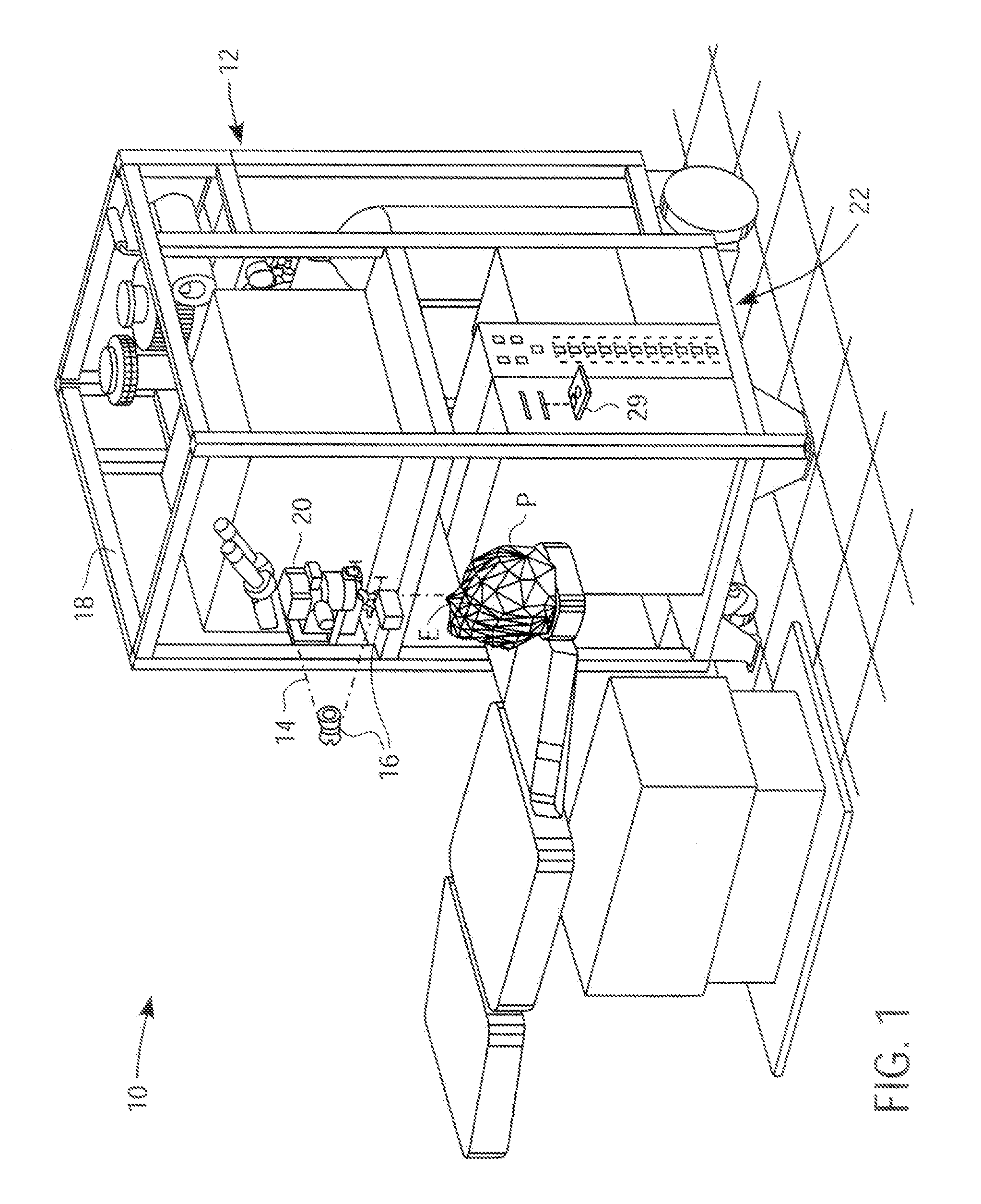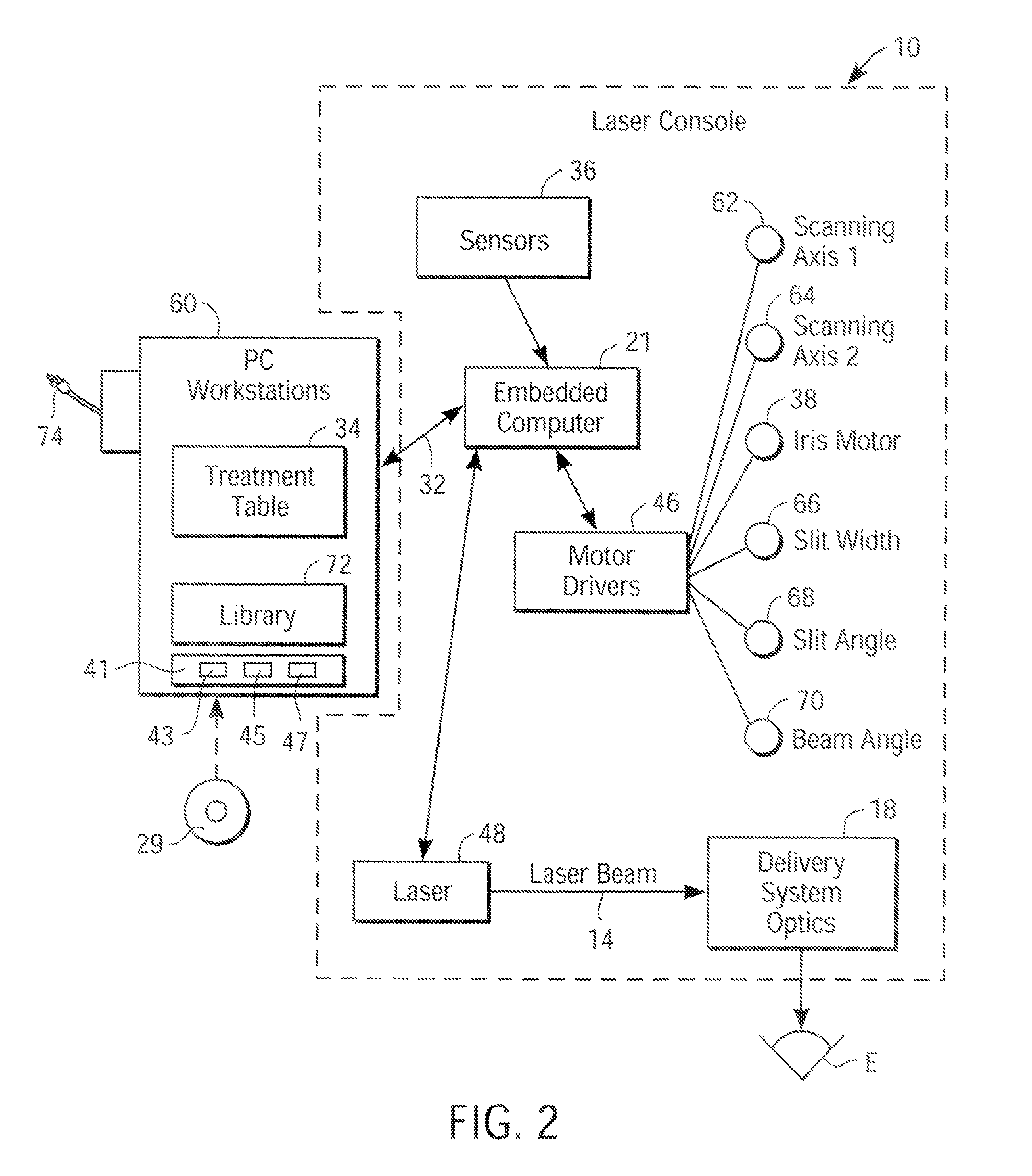Application of blend zones, depth reduction, and transition zones to ablation shapes
a technology of blend zone and transition zone, applied in the field of laser eye surgery, can solve the problems of not being able or desirable to follow known ablation profiles, not being able to achieve the effect of enhancing flap positioning, reducing the incidence of night vision problems, and enhancing the angl
- Summary
- Abstract
- Description
- Claims
- Application Information
AI Technical Summary
Benefits of technology
Problems solved by technology
Method used
Image
Examples
Embodiment Construction
[0034]The present invention is particularly useful for enhancing the accuracy and efficacy of laser eye surgical procedures, such as photorefractive keratectomy (PRK), phototherapeutic keratectomy (PTK), laser in situ keratomileusis (LASIK), laser assisted epithelium keratomileusis (LASEK), and the like. Preferably, the present invention can provide enhanced refractive procedures by improving the methodology for deriving or generating a corneal ablation profile.
[0035]While the system and methods of the present invention are described primarily in the context of a laser eye surgery system, it should be understood that the techniques of the present invention may be adapted for use in alternative eye treatment procedures and systems such as radial keratotomy (e.g., by attenuating an incision depth at the periphery of a radial keratotomy incision), intraocular lenses, collagenous corneal tissue thermal remodeling, removable corneal lens structures, and the like.
[0036]According to the pr...
PUM
 Login to View More
Login to View More Abstract
Description
Claims
Application Information
 Login to View More
Login to View More - R&D
- Intellectual Property
- Life Sciences
- Materials
- Tech Scout
- Unparalleled Data Quality
- Higher Quality Content
- 60% Fewer Hallucinations
Browse by: Latest US Patents, China's latest patents, Technical Efficacy Thesaurus, Application Domain, Technology Topic, Popular Technical Reports.
© 2025 PatSnap. All rights reserved.Legal|Privacy policy|Modern Slavery Act Transparency Statement|Sitemap|About US| Contact US: help@patsnap.com



